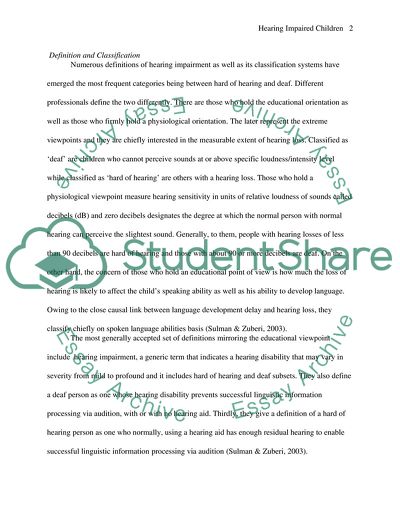Cite this document
(Hearing Impaired Children Research Paper Example | Topics and Well Written Essays - 3250 words, n.d.)
Hearing Impaired Children Research Paper Example | Topics and Well Written Essays - 3250 words. Retrieved from https://studentshare.org/education/1734797-identify-and-describe-the-learning-and-behavioral-characteristics-of-a-hearing-impaired-child-of-elementary-primary-school-age
Hearing Impaired Children Research Paper Example | Topics and Well Written Essays - 3250 words. Retrieved from https://studentshare.org/education/1734797-identify-and-describe-the-learning-and-behavioral-characteristics-of-a-hearing-impaired-child-of-elementary-primary-school-age
(Hearing Impaired Children Research Paper Example | Topics and Well Written Essays - 3250 Words)
Hearing Impaired Children Research Paper Example | Topics and Well Written Essays - 3250 Words. https://studentshare.org/education/1734797-identify-and-describe-the-learning-and-behavioral-characteristics-of-a-hearing-impaired-child-of-elementary-primary-school-age.
Hearing Impaired Children Research Paper Example | Topics and Well Written Essays - 3250 Words. https://studentshare.org/education/1734797-identify-and-describe-the-learning-and-behavioral-characteristics-of-a-hearing-impaired-child-of-elementary-primary-school-age.
“Hearing Impaired Children Research Paper Example | Topics and Well Written Essays - 3250 Words”, n.d. https://studentshare.org/education/1734797-identify-and-describe-the-learning-and-behavioral-characteristics-of-a-hearing-impaired-child-of-elementary-primary-school-age.


